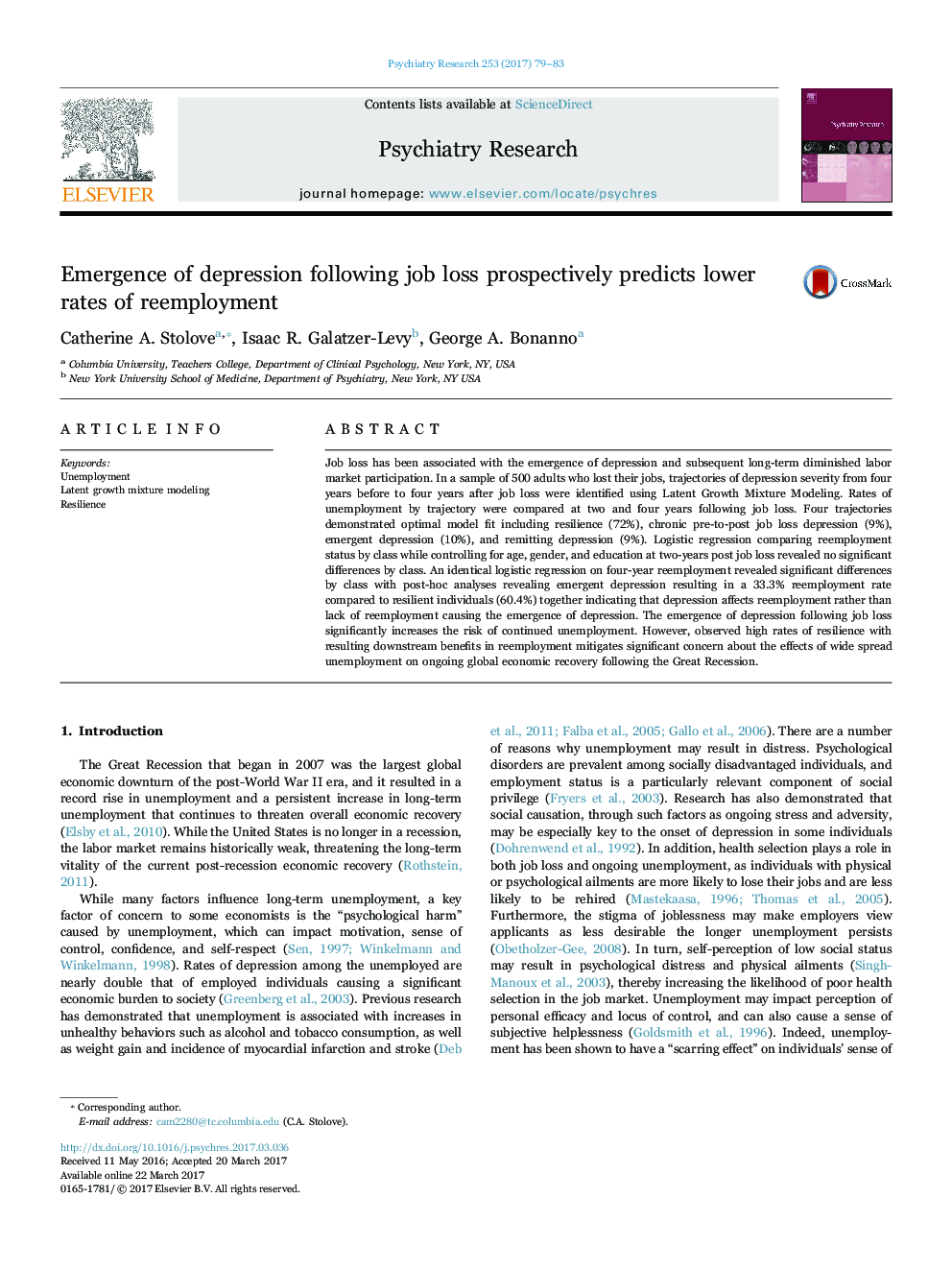| Article ID | Journal | Published Year | Pages | File Type |
|---|---|---|---|---|
| 4933282 | Psychiatry Research | 2017 | 5 Pages |
Abstract
Job loss has been associated with the emergence of depression and subsequent long-term diminished labor market participation. In a sample of 500 adults who lost their jobs, trajectories of depression severity from four years before to four years after job loss were identified using Latent Growth Mixture Modeling. Rates of unemployment by trajectory were compared at two and four years following job loss. Four trajectories demonstrated optimal model fit including resilience (72%), chronic pre-to-post job loss depression (9%), emergent depression (10%), and remitting depression (9%). Logistic regression comparing reemployment status by class while controlling for age, gender, and education at two-years post job loss revealed no significant differences by class. An identical logistic regression on four-year reemployment revealed significant differences by class with post-hoc analyses revealing emergent depression resulting in a 33.3% reemployment rate compared to resilient individuals (60.4%) together indicating that depression affects reemployment rather than lack of reemployment causing the emergence of depression. The emergence of depression following job loss significantly increases the risk of continued unemployment. However, observed high rates of resilience with resulting downstream benefits in reemployment mitigates significant concern about the effects of wide spread unemployment on ongoing global economic recovery following the Great Recession.
Related Topics
Life Sciences
Neuroscience
Biological Psychiatry
Authors
Catherine A. Stolove, Isaac R. Galatzer-Levy, George A. Bonanno,
